Orphaned Loijuk The Elephant Introduces Her Baby To Rescuers
We all love sweet stories about humans saving animals out of the kindness of their hearts and bringing them back to the wild when they no longer need them. In this beautiful story, a mother elephant – who had a heartwarming rescue story of her own – brings her newborn elephant baby to meet the people who rescued her. The origins of Loijuk’s rescue and the introduction of her precious baby happened will surely brighten your day and put a smile on your face because we all love a wholesome tale like this one!
Loijuk The Orphaned Elephant
In 2006, an orphaned elephant named Loijuk was rescued by Sheldrick Wildlife Trust (SWT) in Kenya. She was only five months old when she was found all by herself and was hand-raised by SWT until she was old enough to be released back into the wild.
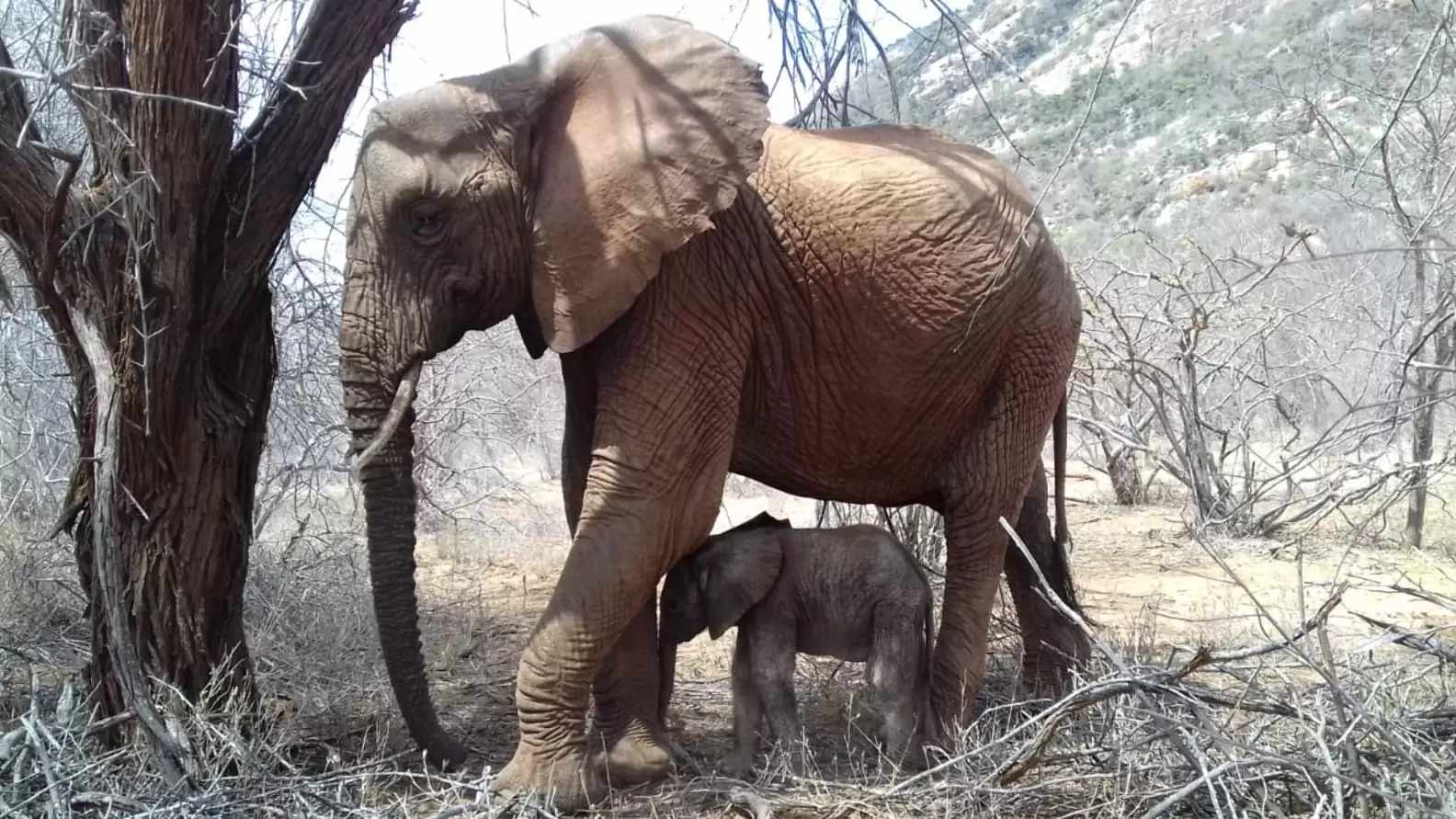
Source: Sheldrick Wildlife Trust
On January 15th, 2006, SWT received a phone call from tribesmen from Northern Kenya in Samburu tribal country. An orphaned elephant was seen by the tribesmen near a swamp called Loijuk.
About The Sheldrick Wildlife Trust
The Sheldrick Wildlife Trust is one of the oldest wildlife charities and a leading conservation organization in Africa. SWT embraces all measures that complement the conservation, protection, and preservation of all wildlife (specifically, elephants).
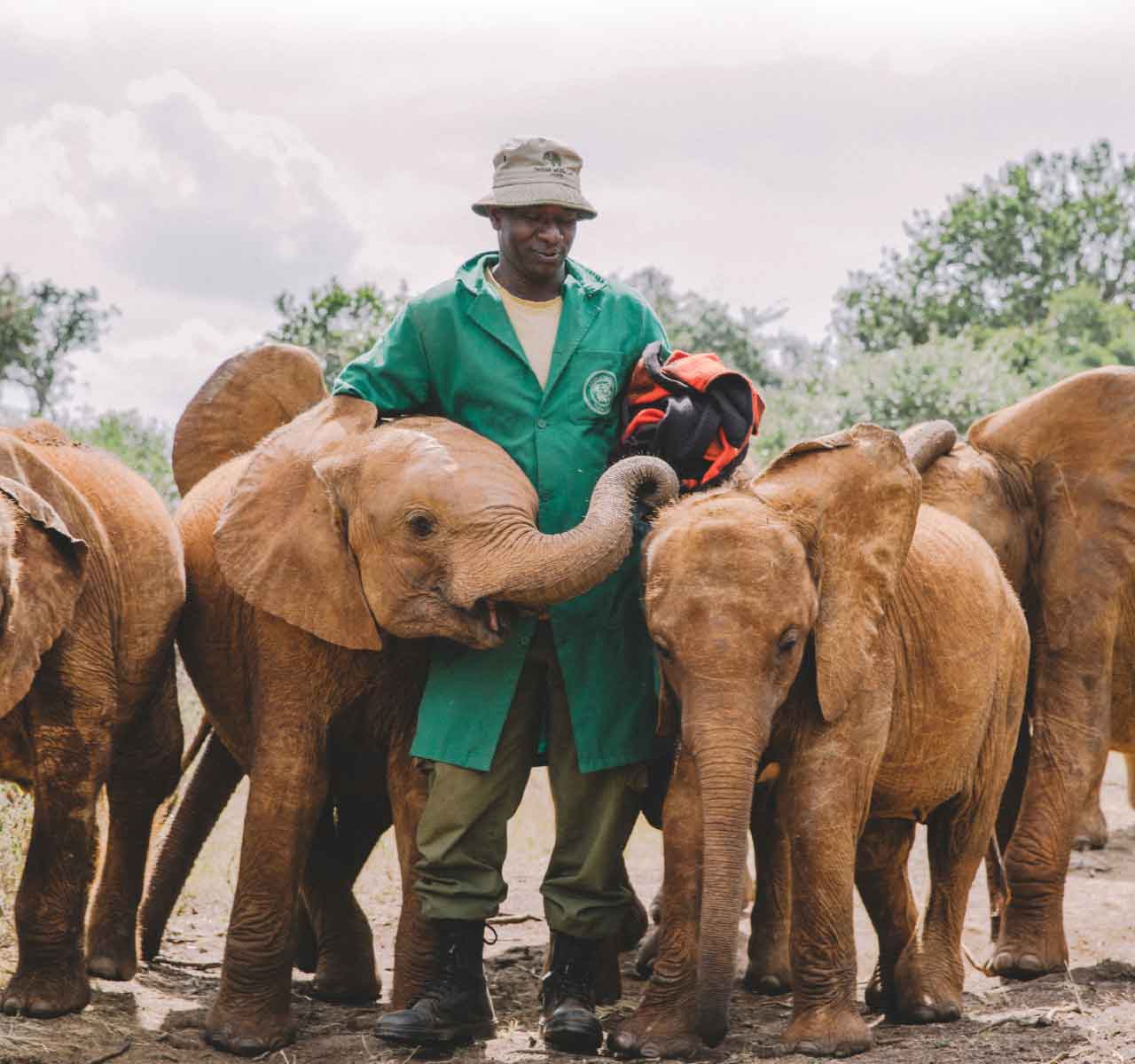
Source: Sheldrick Wildlife Trust
Working across Kenya, SWT is in charge of many different missions. They are as follows: anti-poaching, safeguarding the natural environment, enchanting community awareness, addressing animal welfare issues, providing veterinary assistance to animals in need, and rescuing and hand-rearing elephants and rhino orphans.
SWT’s History
Founded in 1977, the Trust has been in existence for 45 years. SWT was created by Dr. Dame Daphne Sheldrick DBE, in memory of her late husband David Leslie William MBE – the Sheldrick Wildlife Trust possesses a rich and deeply rooted family history. David was considered one of Africa’s most famous pioneer National Park Wardens.
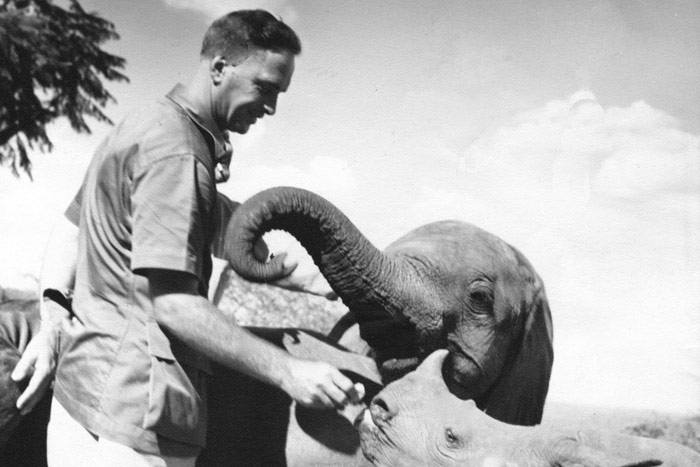
Source: Sheldrick Wildlife Trust
For over 25 years, Kenya-born Daphne lived and work with David, a time when they successfully rehabilitated lots of wild species.
Daphne Sheldrick
Born in 1934, Daphne has always been a devoted lover of animals, and her involvement with wildlife spanned an entire lifetime (60 years). She was deemed an international authority on the rearing of wild creatures. Miraculously, she was the first person to perfect the milk formula and husbandry needed to successfully and appropriately raise infant milk-dependent elephants and rhinos.

Source: Sheldrick Wildlife Trust
Daphne lived with elephants and taught herself to read them. She truly became a leading voice and pioneer of elephant conservation and believed that elephants have the right to live a free and protected life.
SWT Today
After David passed away, Daphne and her family lived and worked in the Nairobi National Park where they built the enduring legacy of SWT and the pioneering work of the Orphans’ Project into the global force for wildlife conservation.
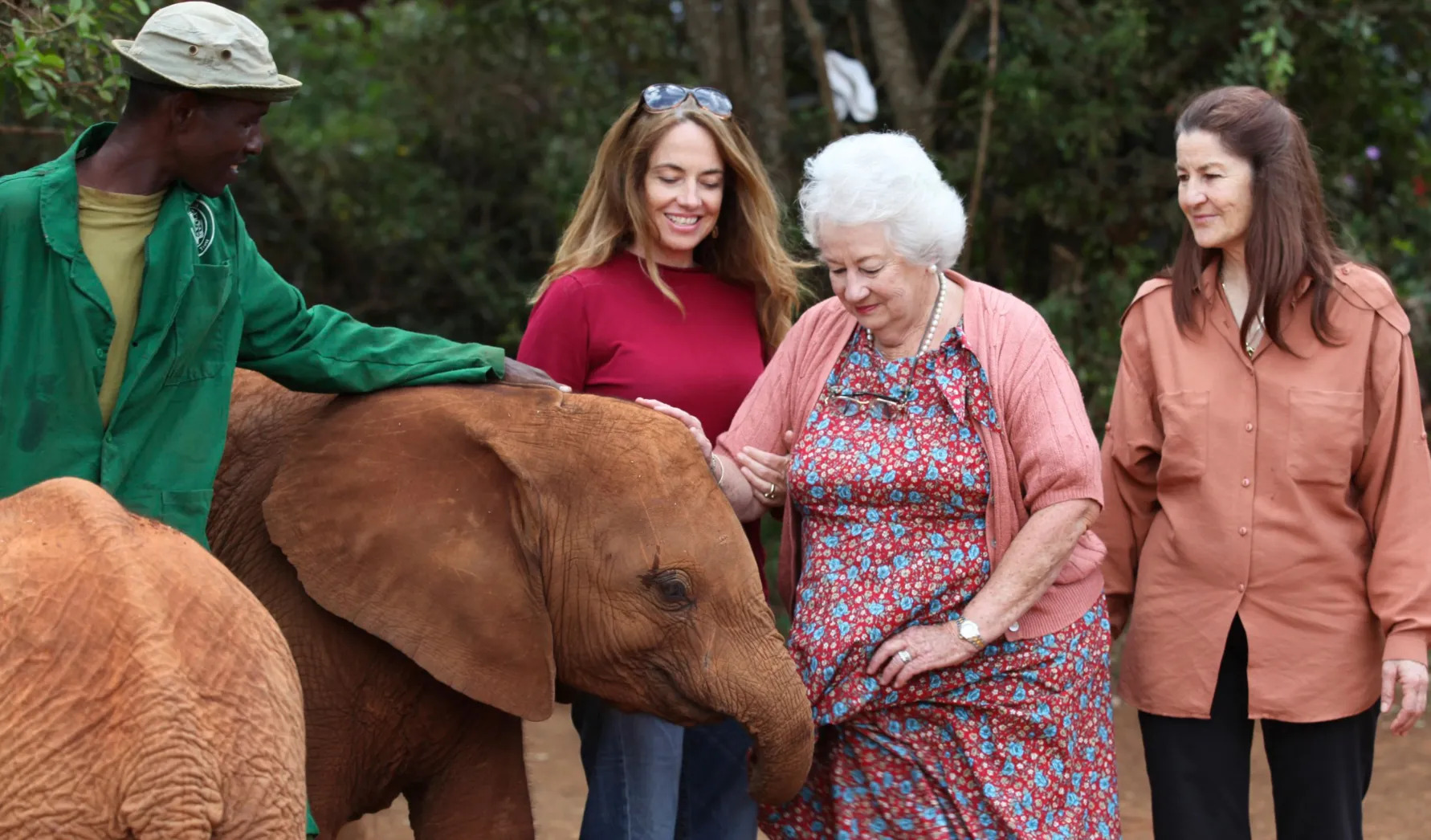
Source: The David Sheldrick Wildlife Trust via AFP/Getty Images
Angela Sheldrick, Daphne’s daughter, ran the Trust alongside her mother for twenty years. Although Daphne passed in 2018 at the age of 83, Angela fervently continues the mission with vigor and passion. She’s supported by her husband, Robert Carr-Hartley, their two sons, Taru and Roan, along with the rest of the SWT team.
Rescuing Loijuk
Considering that most of Kenya had been facing a massive drought that year, its landscape was dry and desiccated. As a result, all of the wildlife there was experiencing severe dehydration, as was baby Loijuk.
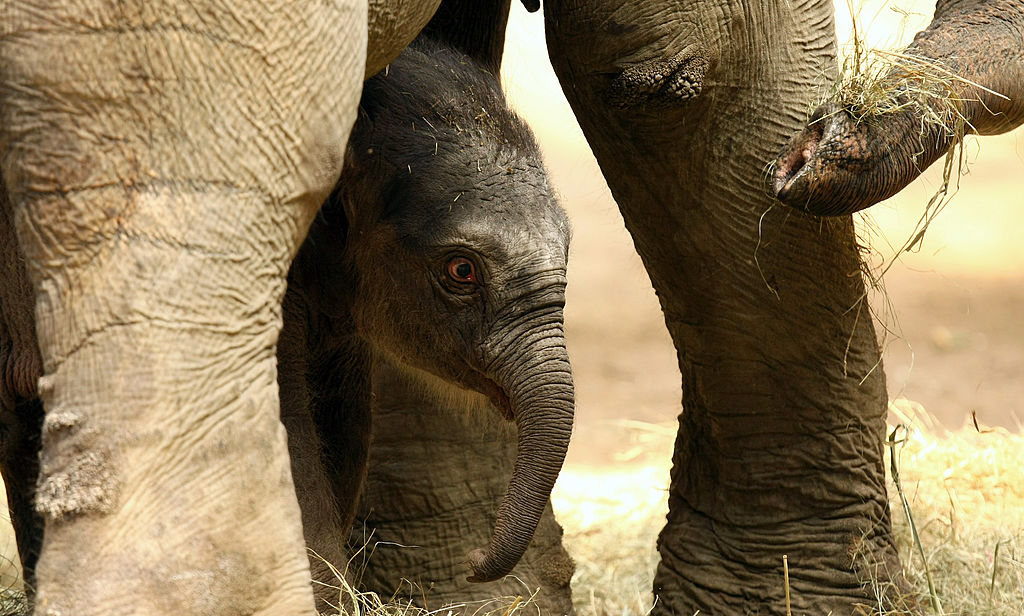
Source: Martin Rose/Getty Images
Loijuk was in a weakened state and all alone. It’s suspected that her mother had fallen prey to the extreme drought conditions. She was carefully tended to by the area’s conservation rangers right after the rescue and then made a three-hour journey in the back of a Land Rover to the Samburu South airstrip (the closest strip that could accommodate a Cessna Caravan aircraft).
Things Were Rough For Loijuk
When Loijuk arrived at a nursery, things didn’t seem particularly promising for the little elephant. Although she was really emaciated and weak, she did take milk. The following day was hard, her temperature decreased significantly and her trunk was damp with liquid spewing from her lungs, both behind her ears, and her trunk was ice cold.

Source: Tom Stoddart Archive/Getty Images
They brought the other orphaned elephants to her and wrapped their trunks around the suffering Loijuk. Luckily, that was all she needed to live. Her little eyes became big and bright as she fought for her life. Loijuk overcame tremendous odds despite coming from a harsh, water-depleted environment.
Lili The Newborn
Ever since SWT nursed baby Loijuk to health, she still has close ties to her human family. Family is important to Loijuk, considering she started her own. Even after years have gone by, she returns to visit her caretakers at SWT each month. This time, with a little surprise.
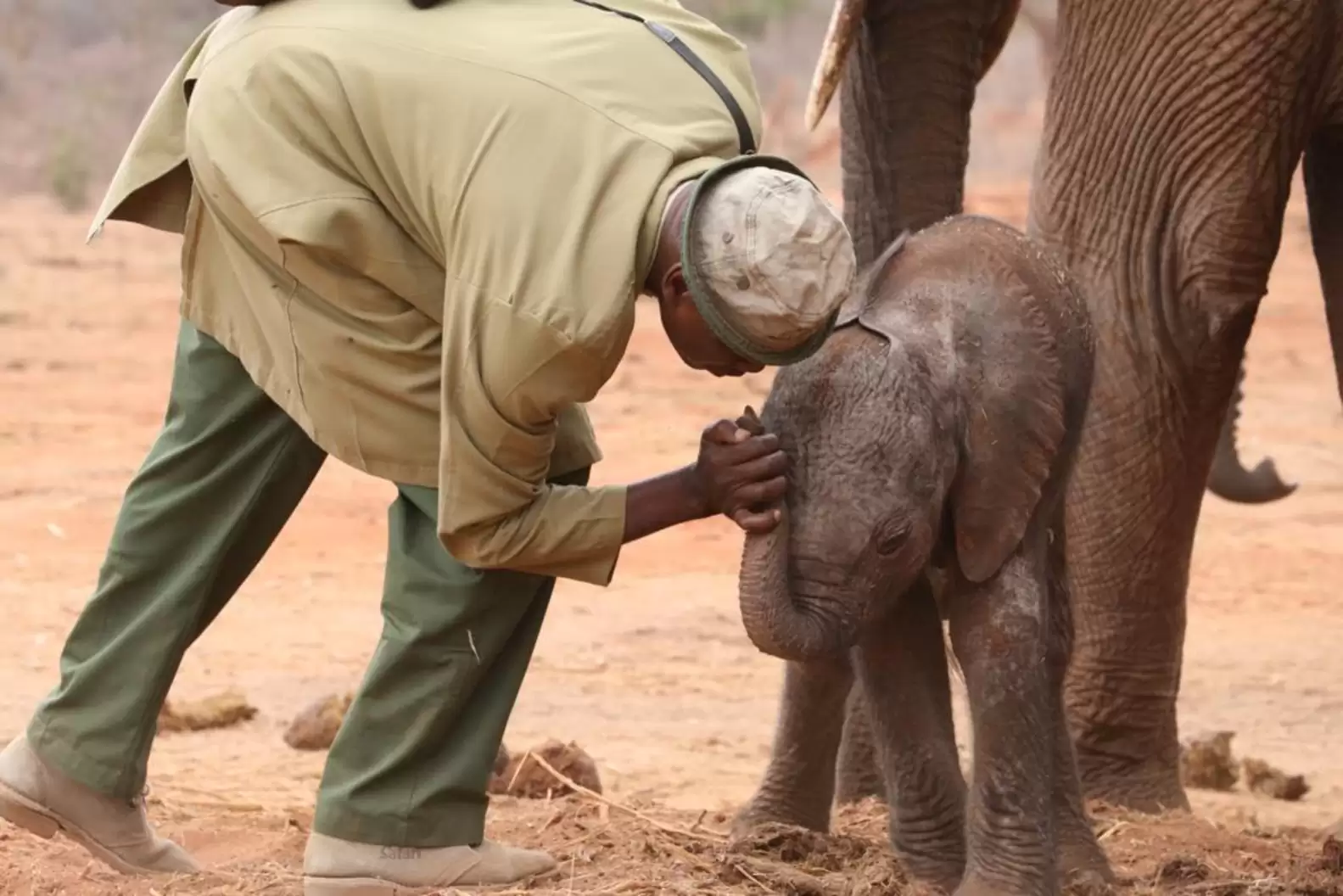
Source: Sheldrick Wildlife Trust
Loijuk was beyond excited to show her newborn calf to her friends at SWT, a calf who was only born a mere hours before the visit. The calf was named Lili. Of course, Loijuk hadn’t forgotten the immense kindness of those that rescued her and the everlasting bond that was forged between them. Benjamin Kyalo, the head keeper, was invited by Loijuk to have a moment with Lili. Initially, she was pretty unsteady on her feet, but Kyalo watched as she got stronger over the course of that week.
Loijuk and Lili
Loijuk stays close to the area around the unit, enabling the keepers to watch over her and see how she is doing. In the wild, calves are raised with the assistance of female relatives within the herd. Loijuk served as a dutiful nanny to other babies before she gave birth to Lili, who now has two nannies of her own! They are wild orphans, like Loijuk, named Naserian and Ithumbah.
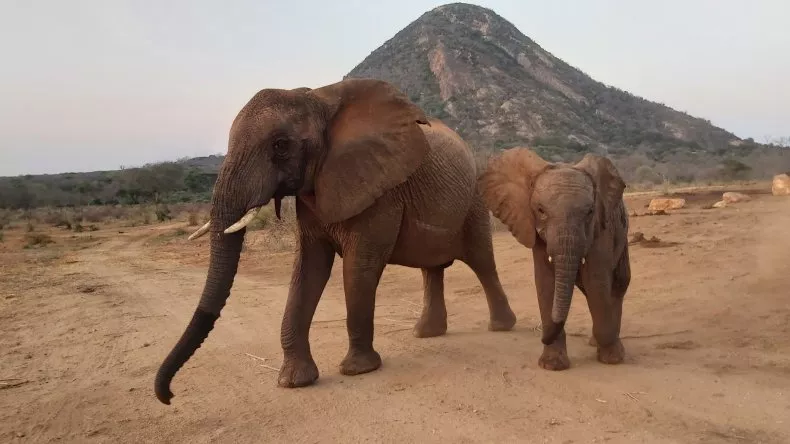
Source: Sheldrick Wildlife Trust
Lili will stick around with her mom’s herd for the rest of her existence. Lili knows that she always has a safe and sacred place she can return to if she is ever in need.
Lili’s New Life
As the 31st calf born to female orphaned elephants raised by SWT now living in the wild, Lili is a shining beacon of hope for other elephant populations everywhere who are in danger. Thank goodness for places like the Sheldrick Wildlife Trust that dedicate their lives to rescuing orphaned elephants and giving them the companionship and nourishment they can’t live without.
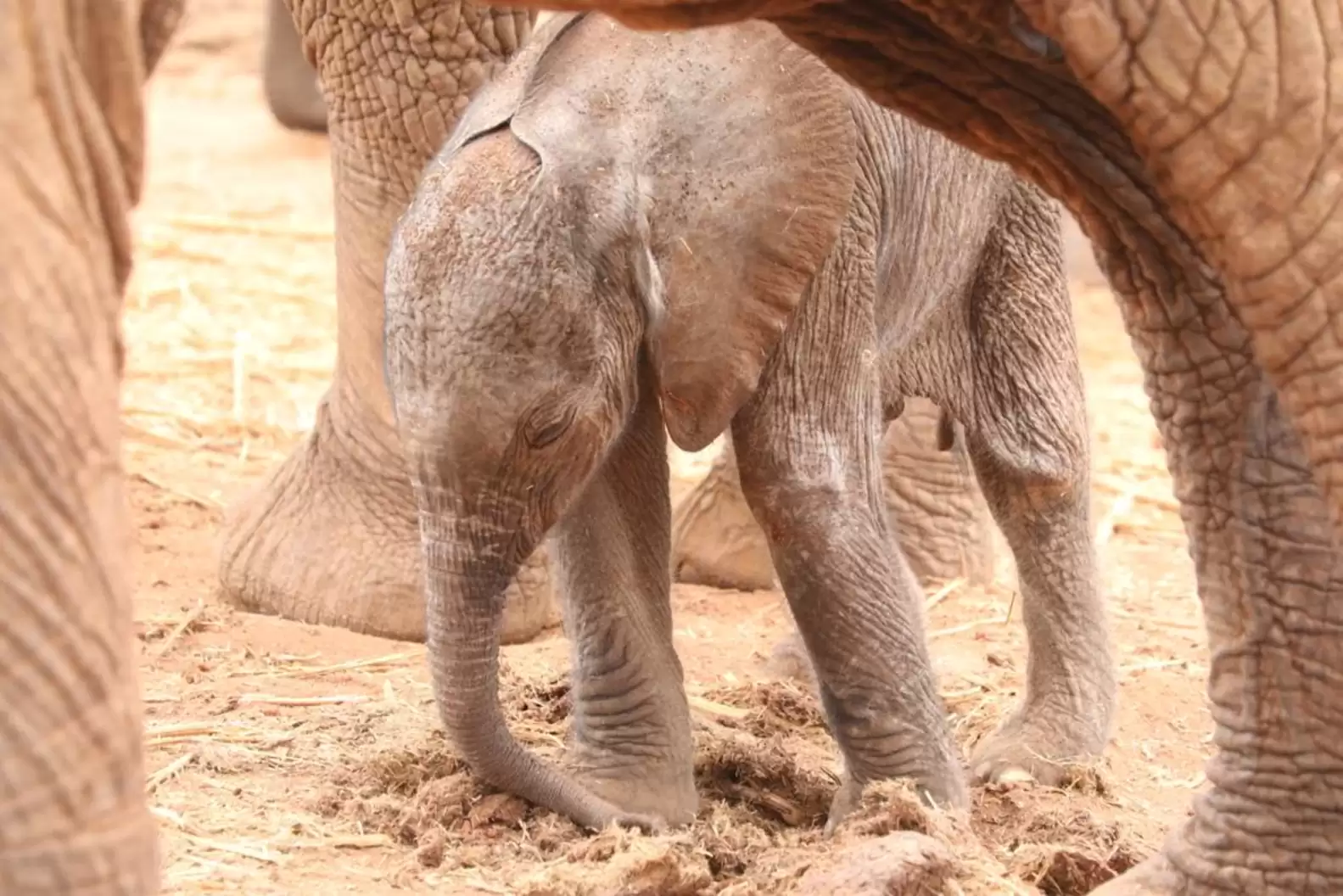
Source: Sheldrick Wildlife Trust
It’s a truly incredible sight to see when baby elephants, and, all elephants for that matter, thrive in their natural habitat, surrounded by other elephants who can watch over them. Lili has a beautiful future ahead of her, seeing as though she’s in good hands (and trunks).
Another Orphaned Elephant Tale
Orphaned elephants, if not rescued and cared for, lose their mothers due to poaching and other harmful environmental conditions like drought. Sheldrick Wildlife Trust has contributed extremely important and life-changing work for these elephants who had nowhere else to go.
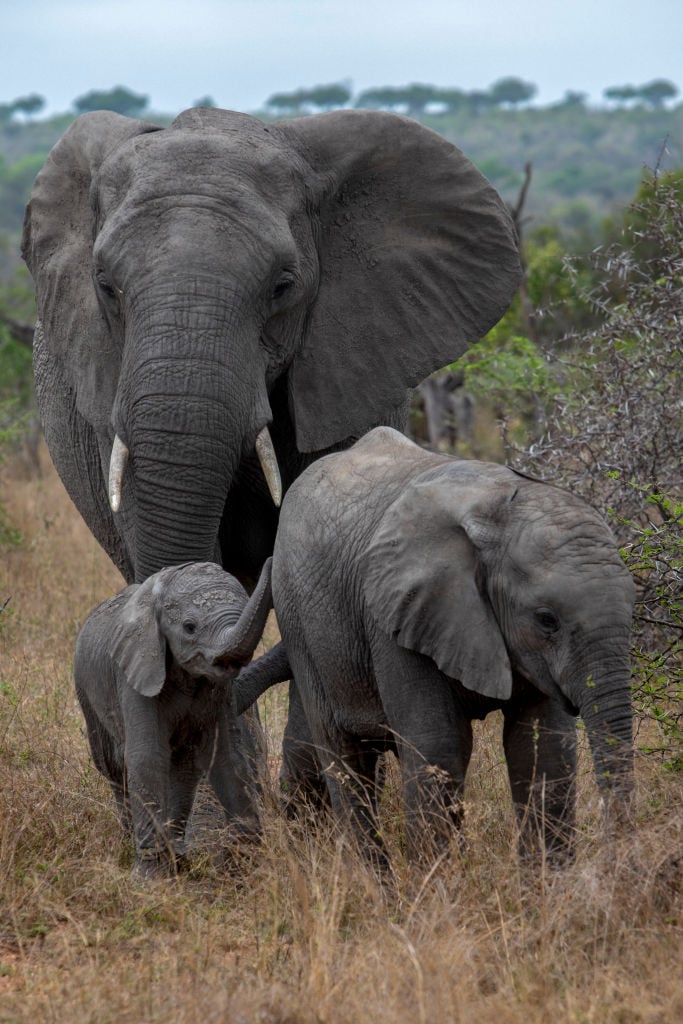
Source: Sheldrick Wildlife Trust
As if we couldn’t get enough of these uplifting stories about orphaned elephants and their adorable newborns! We’ve got another one for you, and it’s a somewhat similar tale to Loijuk and Lili.
Sunyei
Sunyei was raised by SWT in Kenya, just like Loijuk. As with many elephants at the conservation center, she was rehabilitated into one of the ex-orphan herds once she was fully grown in 2009. Ex-orphan herds with calves usually stay close to the units, but one of the male elephants will typically travel further out.

Source: Eric Lafforgue/Art in All of Us/Corbis via Getty Images
It was in 2017 that Sunyei became a mother herself, returning to the trust on the exact same day to “say hello” to her adoring head keeper, Benjamin. He hand-raised her just as he did with Loijuk.
Welcoming Siku
After a video went viral on social media of Sunyei greeting Benjamin with her trunk, it took the workers a while to realize that Sunyei’s daughter (who they named Siku), was only a mere few hours old!
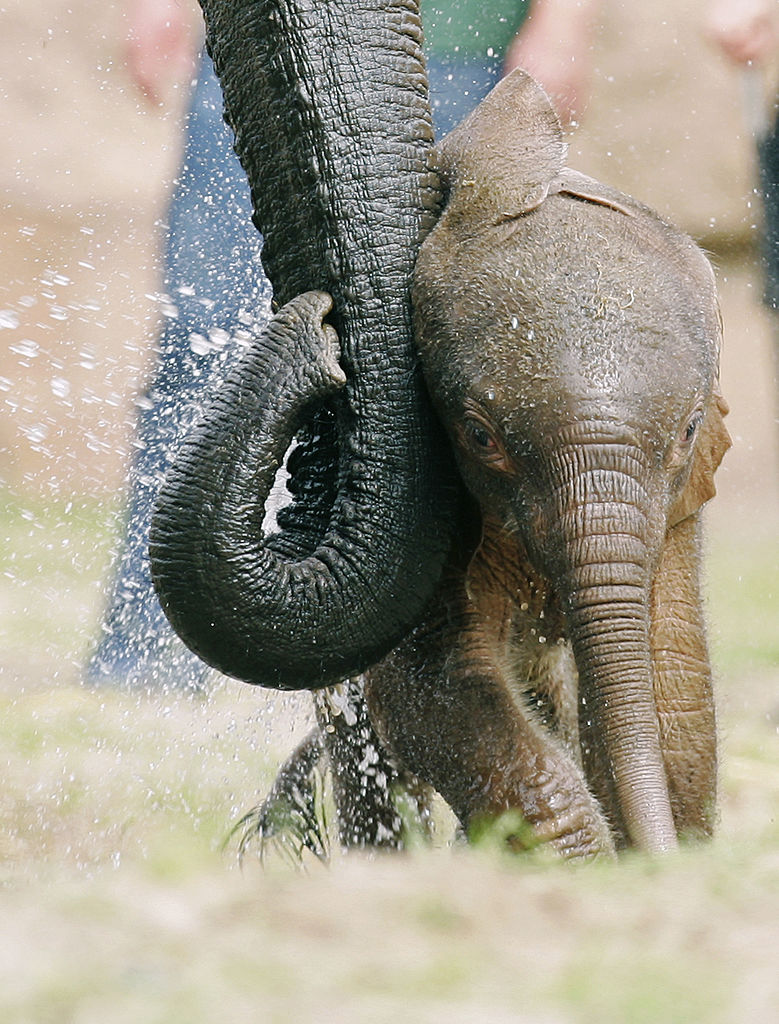
Source: Andreas Rentz/Getty Images
Sunyei took Siku to the western side of the compound, where she let the keepers interact with her baby calf. Aw, how sweet! We wished we could have witnessed this interaction in person.
Family Matters
Much like Loijuk, Sunyei grew up recognizing that Benjamin and the rest of the keepers are her family. With that being said, Sunyei makes everybody aware that she will only ignite the interaction on her terms. The keepers are well aware of this custom.
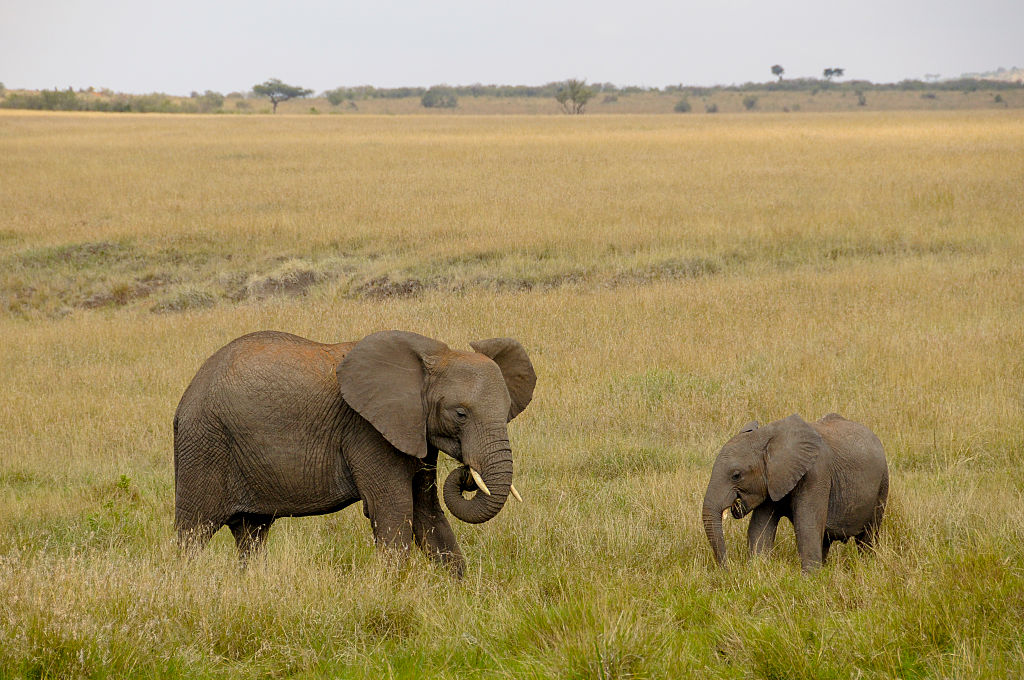
Source: Athanasios Gioumpasis/Getty Images
It was such a special moment that also warmed the heart of Sheldrick’s executive director, Rob Brandford. He wrote in an email this experience, “heartwarming and special, but perhaps no surprise as we’ve actually seen this happen before!”
Sunyei’s Amazing Story
Sunyei was a small infant when she arrived at the conservation center after falling down a hole in a river. Before about 6:45 pm, Sunyei arrived at the Nairobi Nursery. She was given the usual antibiotic precautionary injection and gulped down 3 pints of milk and 3 pints of hydration. Sunyei slept quietly through the night.
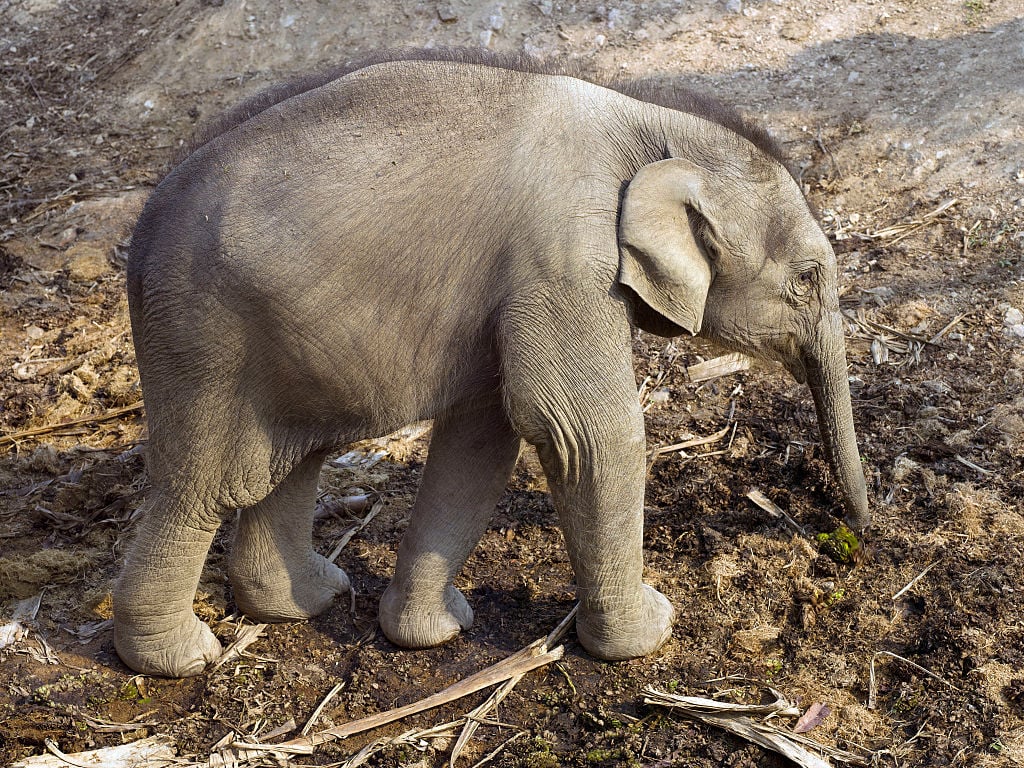
Source: In Pictures Ltd./Corbis via Getty Images
She was given more cow’s milk and wasn’t in too bad of shape. She was quite lean, considering where she came from an elephant population that was always on the move and always at risk.
Sunyei’s Life Post Rescue
After elephants grow to their full maturity, ex-orphans are integrated into the wild once more, often joining with other ex-orphan herds, as Sunyei did in 2009.
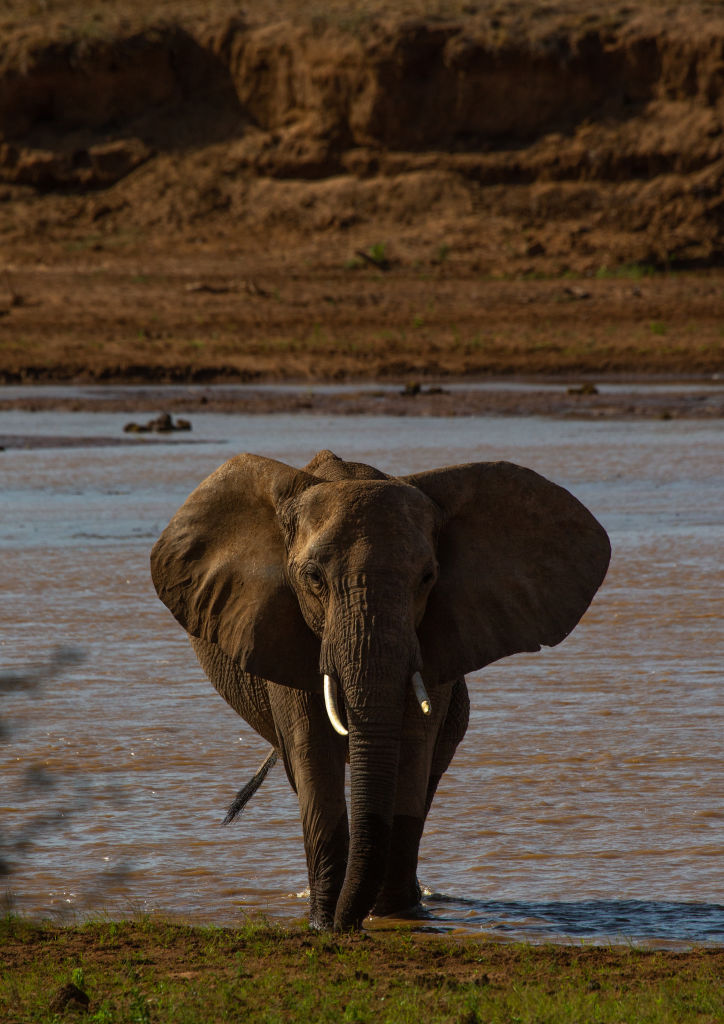
Source: Eric Lafforgue/Art in All of Us/Corbis via Getty Images
Sunyei was a favorite at the Nairobi Nursery. In July of 2005, she moved to the Ithumba Unit with her elephant gal pals, Galana, Madiba, and Ndomot. Sunyei still roams with Galana’s ex-orphan herd at Ithumba, where she gave birth to Siku.
Positive Reports On Siku And Sunyei
Siku and Sunyei are doing miraculously, according to Brandford. He stated, “Sunyei and her baby Siku continue to thrive and we’ve been lucky to see them and their herd on and off during July and August after an absence of three months.”
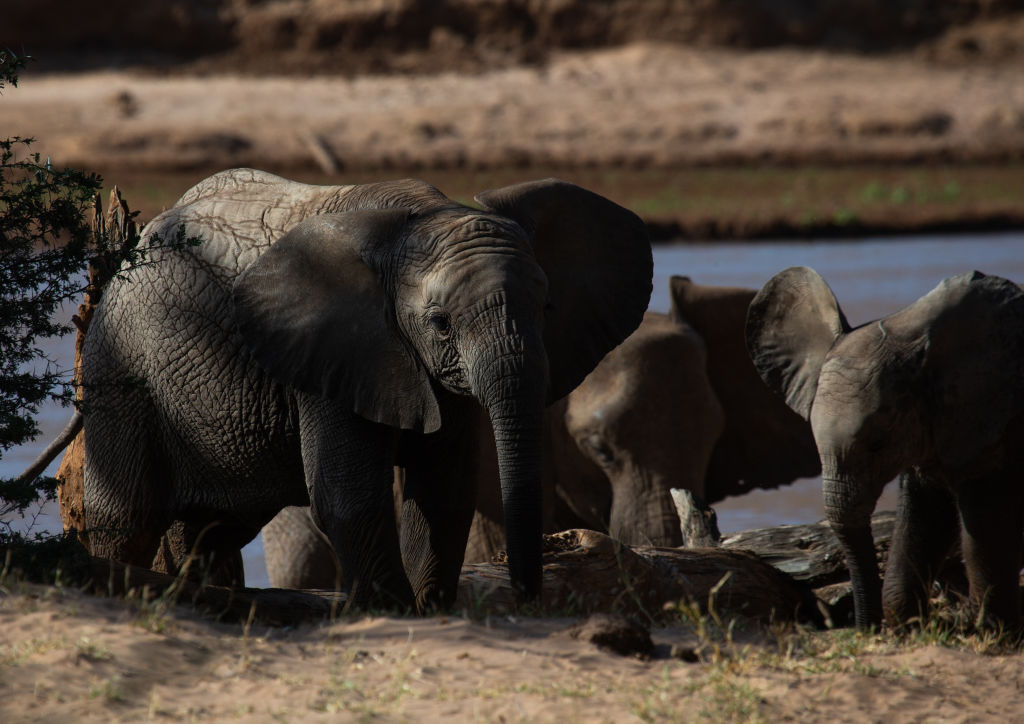
Source: Eric Lafforgue/Art in All of Us/Corbis via Getty Images
Both mom and daughter are in picture-perfect health, with Siku having plenty of playmates. Since Siku’s birth, other orphans in the herd have also had calves. So, clearly, Siku has a very optimal situation, as well as having fun mates around!
Elephants Never Forget
Elephants have an incredible memory and they can distinctly remember faces. The orphans can always venture back into the Reintegration Units whenever they want to. Whether it’s a quick “hello,” checking in on the orphans, or sometimes even returning for some water (SWT water holes are refilled daily), and hay, the elephants know where to go.
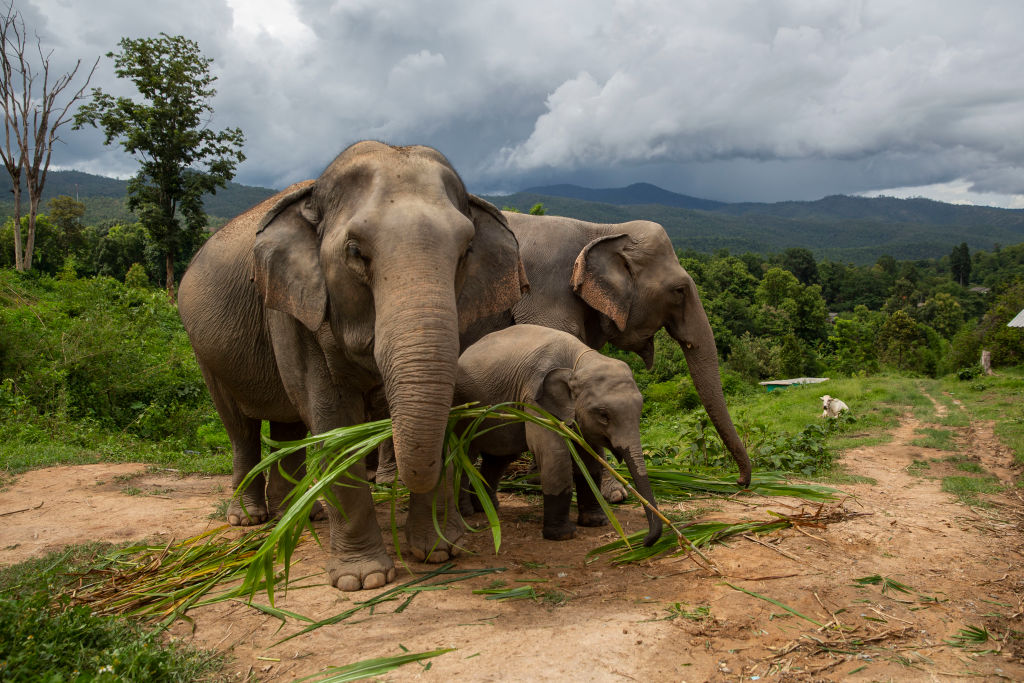
Source: Lauren DeCicca/Getty Images
Sometimes, orphans travel almost 50 miles to get help with their injuries. Ex-orphans still hang around, even sleeping outside the stockades. When that happens, the SWT crew is treated to a slumber party of sorts as these gentle giants lay down and sleep in peace. Sunyei is a remarkable case study of how, even after a decade, she still remembered where she grew up, and those that gave their hearts to her.
Elephants As A Species
Elephants are remarkable creatures that are the biggest land mammals on earth and have distinctly gigantic bodies and big ears. They weigh 4-6 tons and are approximately 18-24 feet in length. Their long trunks are their most crucial asset – they’re able to pick up objects, trumpet warnings, greet other elephants, and suck up water for drinking and bathing.
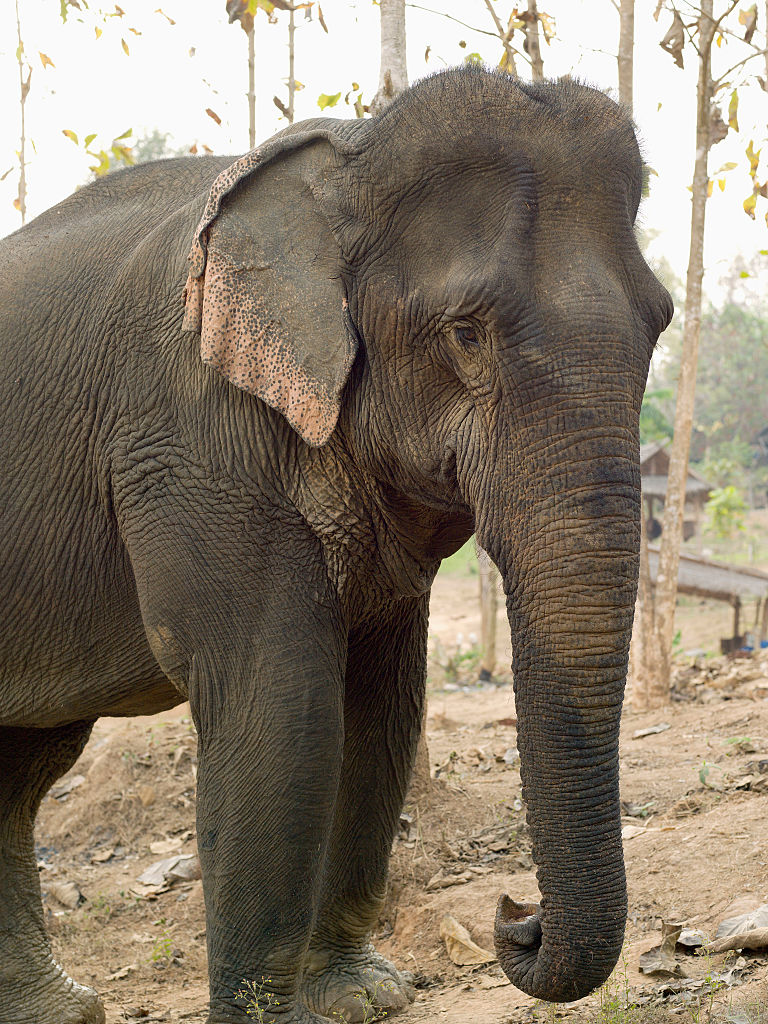
Source: In Pictures Ltd./Corbis via Getty Images
African elephants, both male, and female grow tusks. Each individual can either be left or right-tusked, and the one they use more commonly is smaller because of wear and tear. Tusks are essentially extended teeth that serve a host of purposes, such as: protecting the trunks, lifting and moving objects, gathering food, and stripping bark from trees. Elephants can also use their tusks to dig holes to locate water underground.
Asian Vs. African Elephants
There are two types of African elephants that exist with varying characteristics: the savanna elephant and the forest elephant. The African savanna elephant is the largest elephant species, whereas the Asian forest elephant is smaller in size.

Source: Per-Anders Pettersson/Getty Images
With more than 10 distinct physical characteristics between them, Asian elephants do differ from African elephants. For instance, Asian elephants’ ears are smaller compared to the large fan-shaped ears of African ones. Some male elephants have tusks, while both male and female African elephants grow tusks.
Social Structures
Elephant groups are led by a matriarch elephant and organized into complex social structures of male and female calves. Male elephants usually live in isolation or in small bachelor groups.
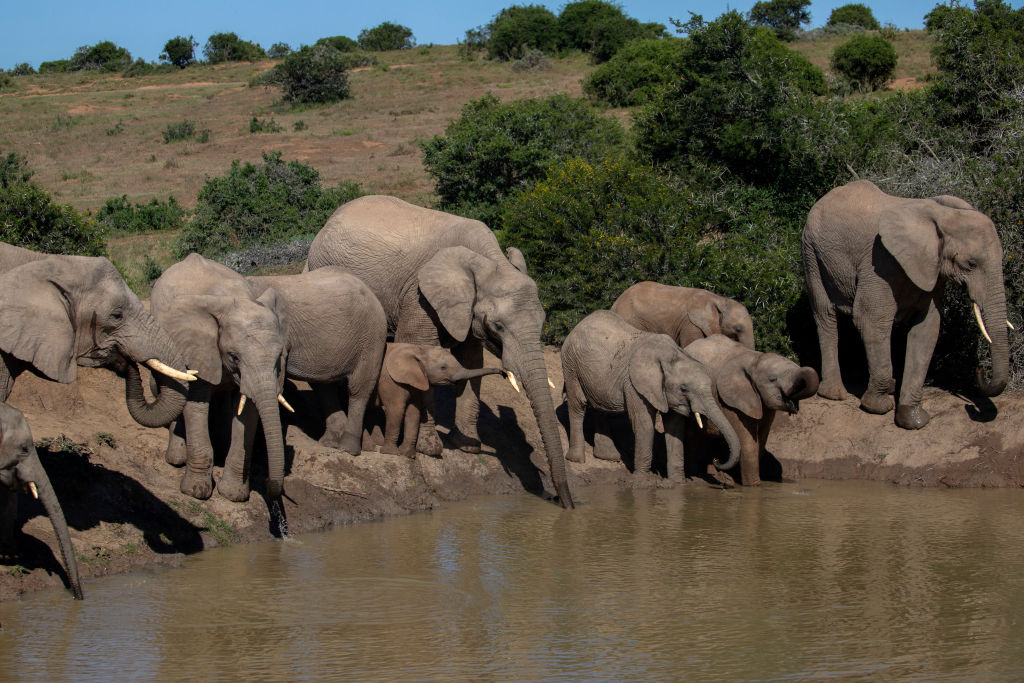
Source: David Silverman/Getty Images
After a gestation period of 22 months, a single calf is born to a female once every four to five years. The calves are tended to by the whole herd of female relatives. Female calves sometimes stay with their maternal herd for the duration of their lifespan. On the other hand, male calves split from their herd after they achieve puberty.
The Social Groups Of Forest Elephants
The Forest elephants’ social groups differ in that they may only be comprised of an adult female and her offspring. However, they may congregate in larger groups in forest clearings where there are more abundant resources available to them. These groups are often smaller than those of the savanna elephants.
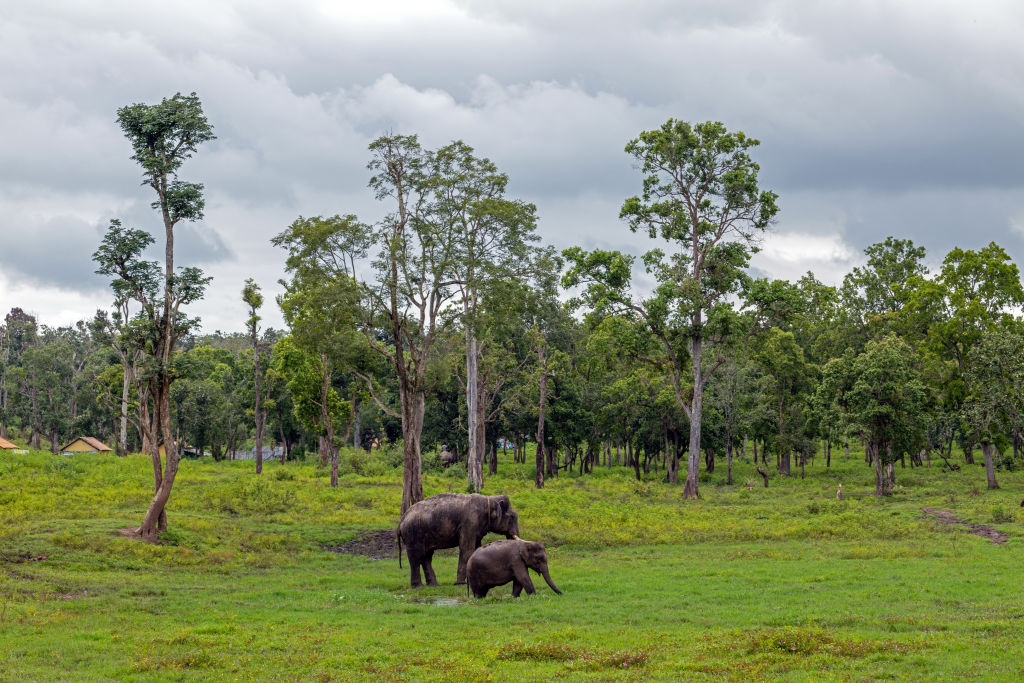
Source: Ryan Paul Lobo/Getty Images for Lumix
African forest elephants live in family groups of up to 20. They forage on leaves, seeds, fruit, and tree bark.
Why African Elephants Are So Important
Elephants are crucial to maintaining the forest and savanna ecosystems for other species and are uniquely tied to rich biodiversity. They are important ecosystem engineers, making pathways in densely forested habitats for other animals. Remarkably, an elephant’s footprint enables a micro-ecosystem that, when brimming with water, can be a home for tadpoles and other organisms.
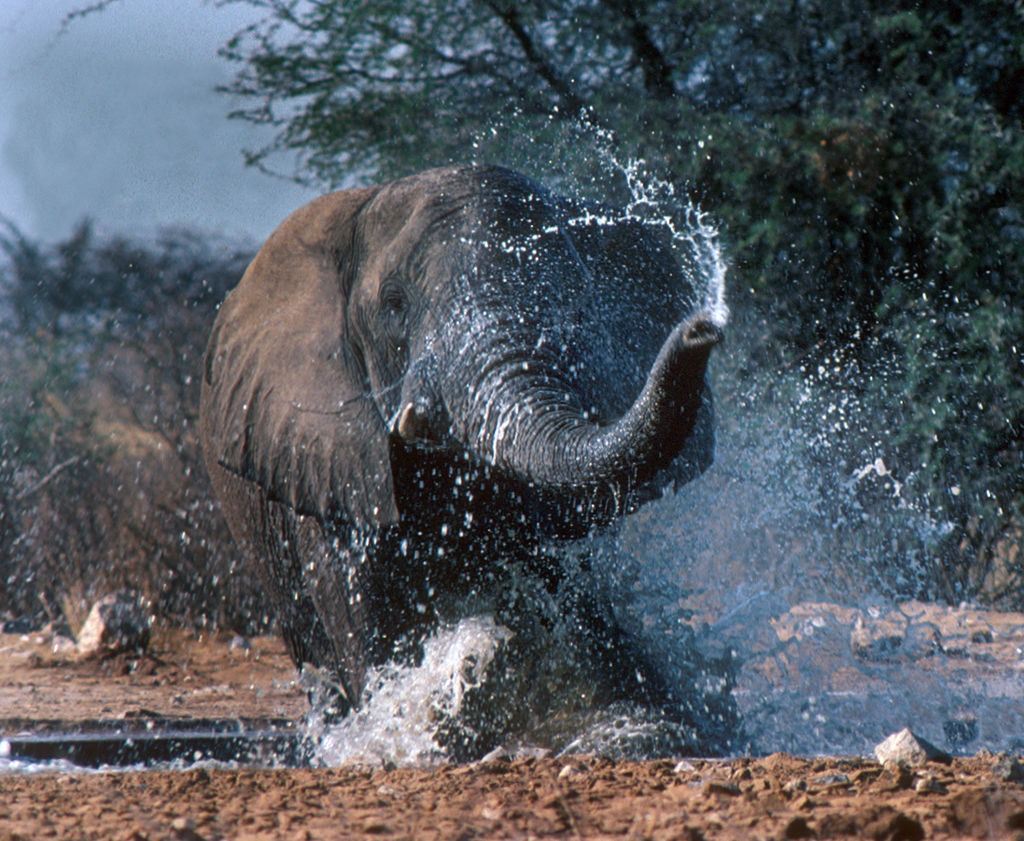
Source: Tom Nebbia/Corbis via Getty Images
They are a keystone species and keeping them safe from external threats is of the utmost importance.
They’re In Extreme Danger
As of 2021, elephants were officially declared endangered by the International Union for Conversation of Nature (ICUN). There are approximately 415,000 left in the world. The primary reason for their near extinction is poaching, due to the demand for ivory.
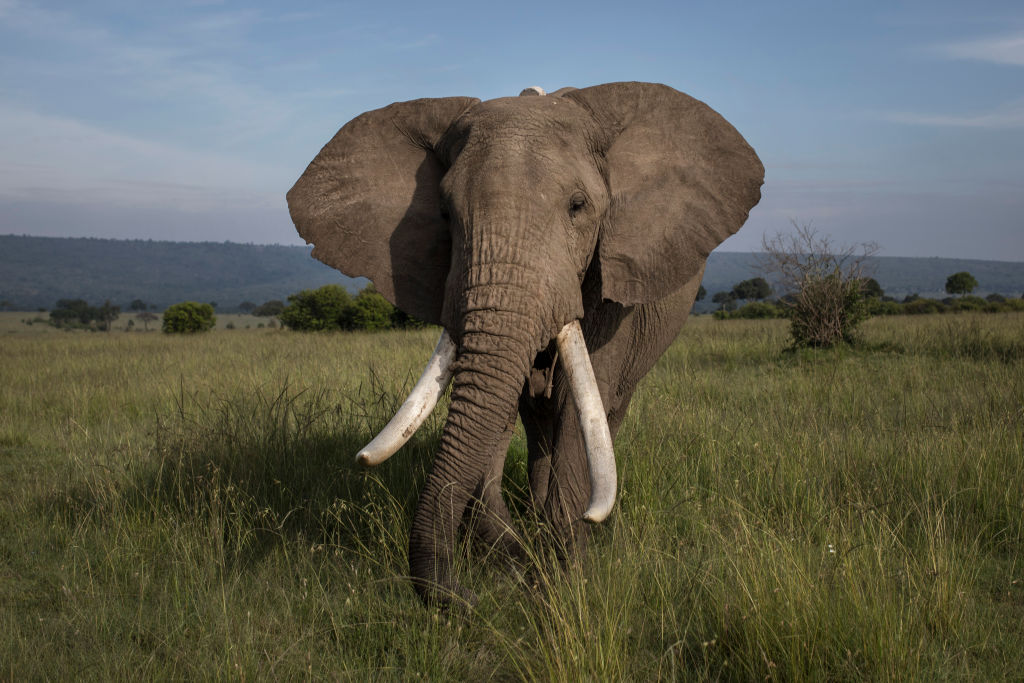
Source: Siegfried Modola/Getty Images
Also, Asian elephant populations are most at risk from habitat loss and resulting human-elephant conflict.
People Want Their Tusks
In recent years, at least 20,000 elephants in Africa have been killed for their tusks. Upsettingly, African elephants have been hit the hardest by illegal ivory activities. Their populations declined by 62% between 2002-2011, while also losing 30% of their geographical range. The population of African savanna elephants declined by 30% between 2011 and 2015.
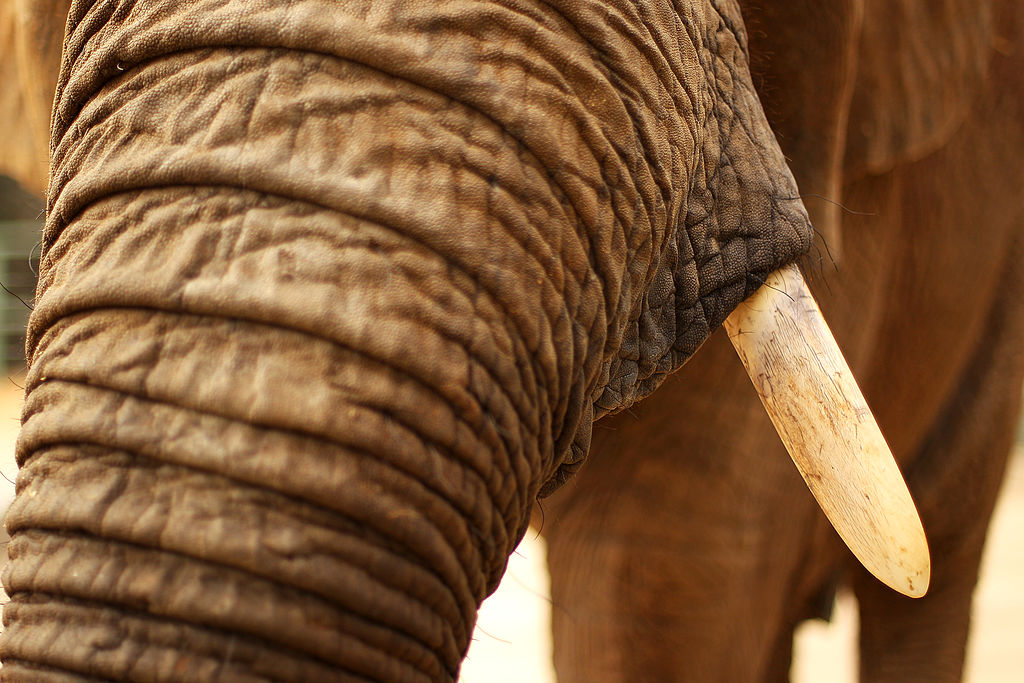
Source: Mark Kolbe/Getty Images
Between 2011 and 2015, the dramatic decline has continued, even accelerated with total losses of up to 90% in some landscapes.
Illegal Ivory Trade
In 1989, the Convention on International Trade in Endangered Species of Wild Fauna and Flora (CITES) – a global agreement among governments to regulate or ban international trade in species under threat – banned the commercial trade of elephant ivory. While poaching rates definitely dropped, they began to rise again in 2010 because of serious interest in purchasing ivory out of Asia.
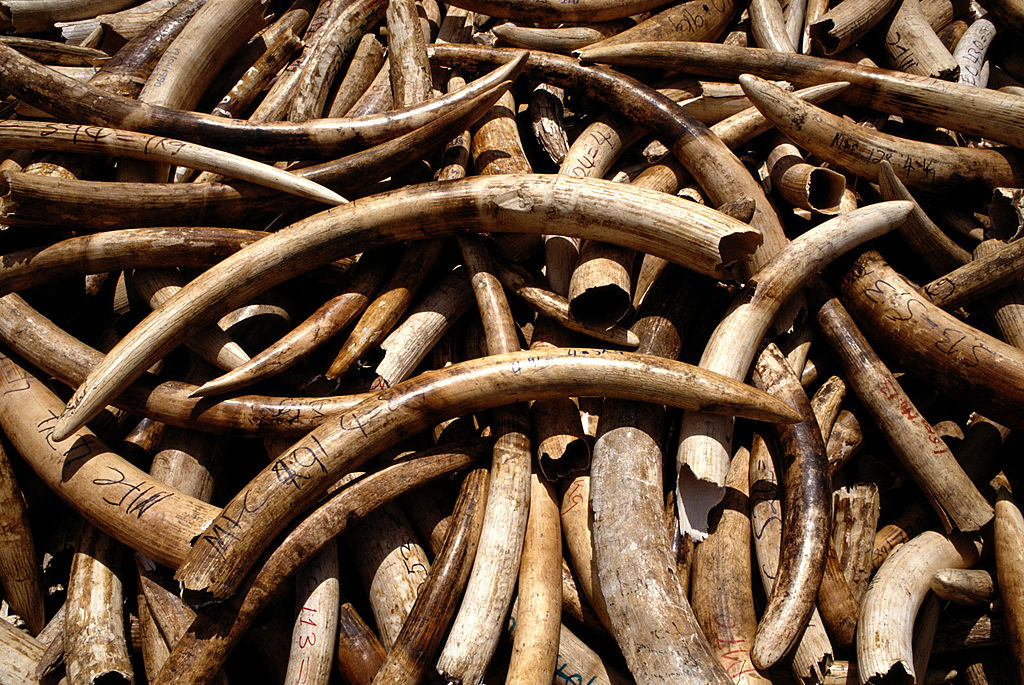
Source: Tom Stoddart/Getty Images
After campaigns by WWF and other conservation groups, governments in big ivory markets like Hong Kong, Thailand, the U.S., and the U.K., were forced to take action to enforce restrictions on illegal and unregulated domestic trade that was fueling the poaching.
Habitat Loss
Sadly, elephants are losing their habitats and ancient migratory routes because of expanding human settlements into their habitat, agricultural development, as well as infrastructure construction. Farming and other development activities pose a massive threat to elephant populations.
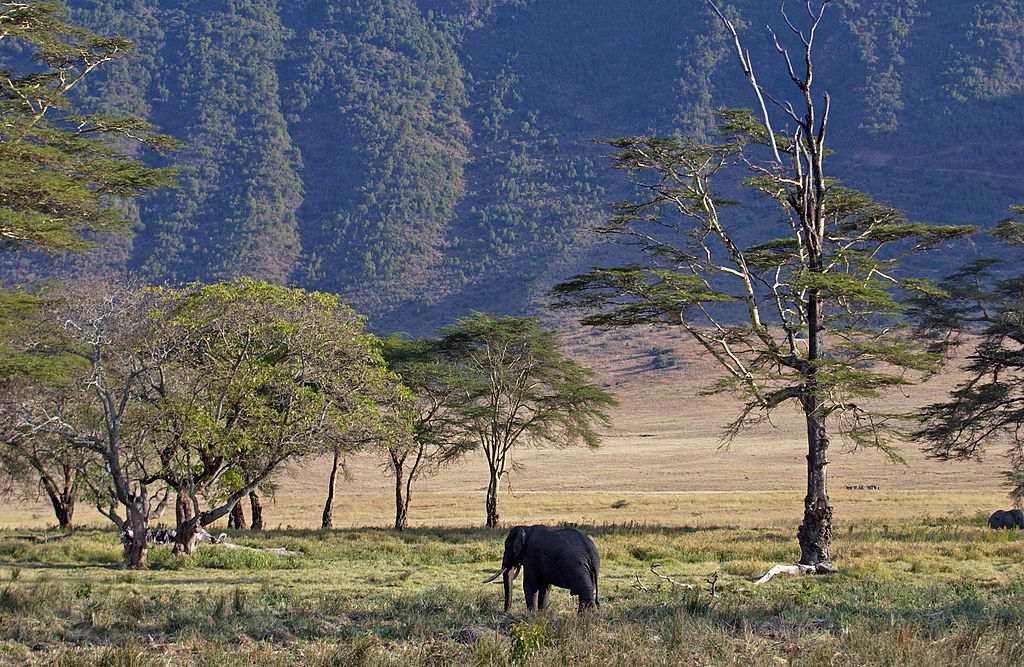
Source: Tim Graham/Getty Images
Since many elephant habitats extend outside of protected areas, it’s inevitable for friction between humans and elephants to come into play.
Human-Elephant Conflict
As more and more elephants come into closer contact with humans, the conflict is increasing. Because of this clashing dynamic, elephants often destroy crops and property, potentially taking some human lives.

Source: Matt Moyer/Getty Images
As a result, this can cause retaliatory behavior from humans, which clearly is a threatening sign for the elephants.
Call To Action
Organizations like WWF (World Wide Fund for Nature, Inc.) are working tirelessly to protect elephants, reduce conflicts between humans and elephants, and strengthen anti-poaching initiatives.
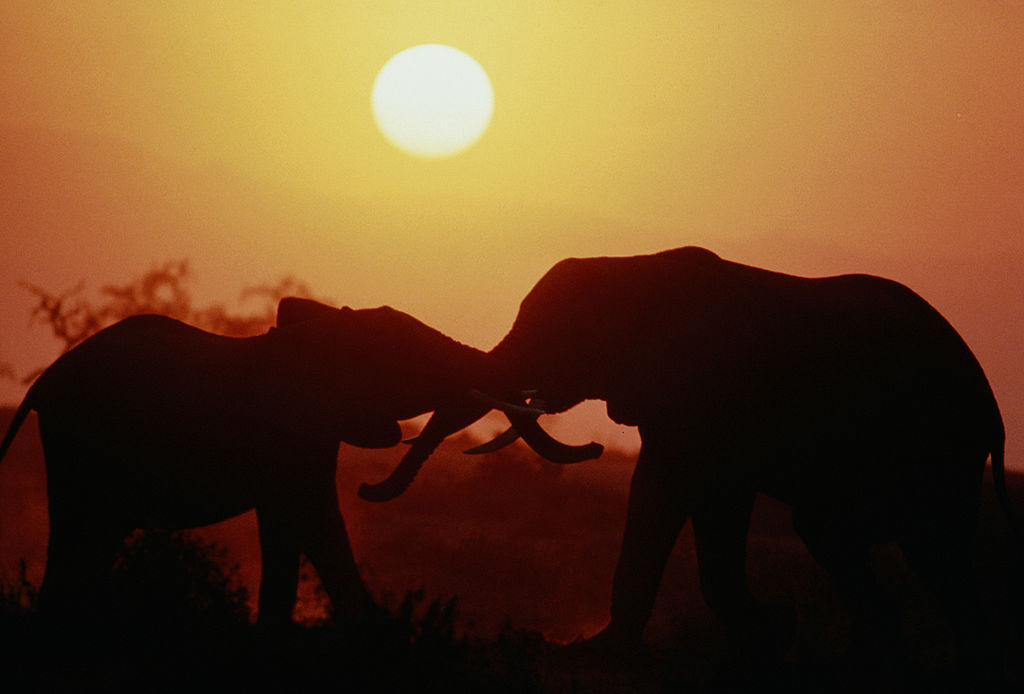
Source: Tom Stoddart/Getty Images
Conservationist groups such as the Sheldrick Wildlife Trust make it their mission to protect elephant habitats and ensure their safety and protection from outside threats. We can only hope that all of the worldwide efforts from groups and organizations can help get these precious creatures safe from mass extinction. Only time will tell.
